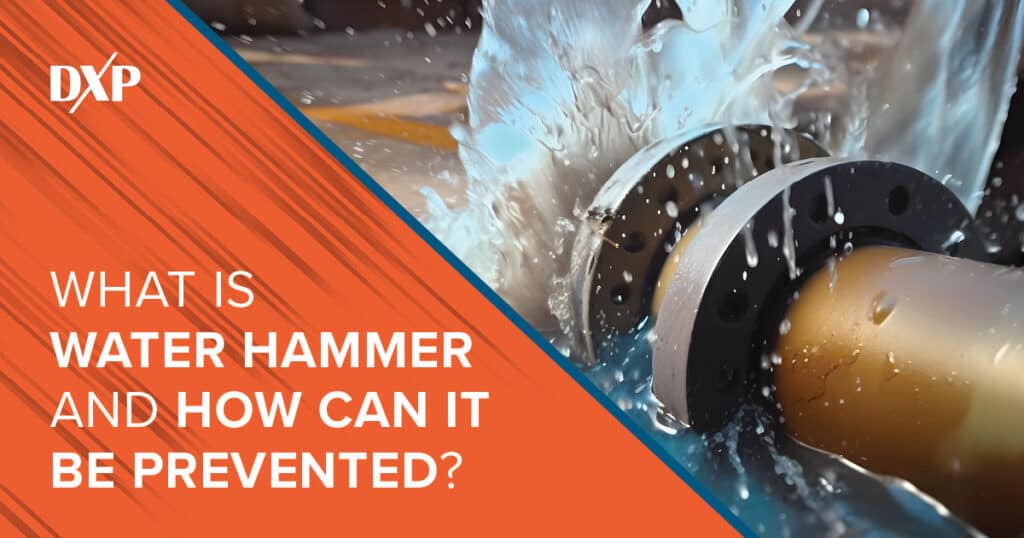Many pump issues can be damaging to your pump system. Corrosion, cavitation, and pressure loss are some of the most common problems pump operators look to avoid. One issue that isn’t talked about as much in our industry is water hammer. It can be a very serious concern. If water hammer occurs and isn’t addressed properly, it can significantly damage pumps, supports, and piping. Your plant could also face a major safety hazard.
Water Hammer Basics
So what exactly is water hammer? It occurs when there is an extreme surge in pressure and flow rate. Fluids start moving faster through the pumps and piping. This increases force and puts severe strain on your equipment. Pipes can leak or burst. Supports may weaken with erratic surges or flow reversal. Water hammer can happen in almost any pump and piping system, with any type of process fluid. It is typically more of a concern when pumping liquids. However, gases can also cause a form of water hammer.
What Causes Water Hammer?
Any number of causes lead to increased pressure and water hammer. There may be an equipment issue or abnormal pump conditions. Sometimes it’s the slightest change in a valve position or a weak seal. Rough start-up and shutdown or sudden power failure can also cause water hammer. Most pressure changes in pump systems are small and won’t cause serious problems. Unfortunately, these minor variances often go undetected or ignored. Pressure can continue to build up and eventually lead to water hammer.
How to Prevent Water Hammer
Preventing water hammer starts with having the right system design and equipment in place. Actuators, valves, and control systems are more advanced than ever. They are designed to provide precise flow control and minimize the risk of pump problems like water hammer. Many operators install variable speed actuators that allow for enhanced control in all conditions. By improving valve modulation, water hammer becomes less of a concern.
Pulsation dampening is another priority when addressing water hammer concerns. You may need to reduce extreme pulsations within the pump system to create more consistent fluid flow and pressure. A pulsation dampener is a commonly added pump accessory, which can help prevent water hammer damage.
Data-Driven Maintenance
In addition, you can utilize monitoring systems and data gathering to identify any changes in operating conditions. Slight changes in pressure, temperature, or flow rate can be recognized in real time. Preventative maintenance, adjustments, and repairs can be made to prevent water hammer, cavitation, or other potential pump system failures. Data-driven predictive maintenance continues to grow in popularity in the pump industry. It uses today’s technology to improve system optimization and pump management practices.
Water hammer is only one issue pump operators need to understand. It’s important to select the right equipment, install it properly, and dial in the system for optimized results. Preventative maintenance and proactive repairs also prevent catastrophic failures and equipment damage.
To address your water hammer problems or any of your pump management needs, count on the pump experts at DXP Pacific. Contact us today and see how we can optimize your pump system and keep it running correctly for many years to come.

